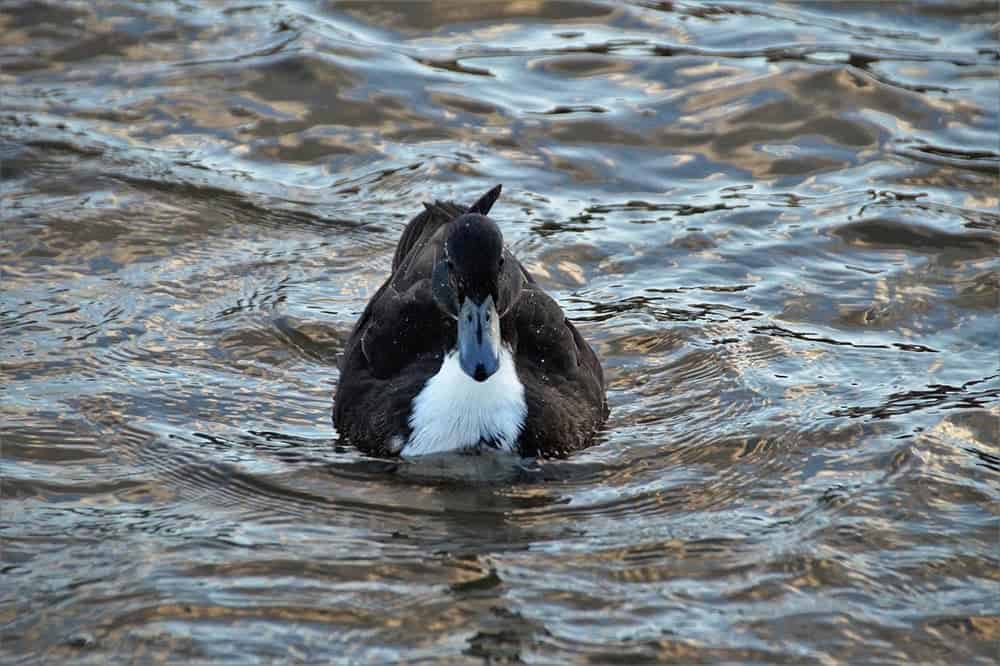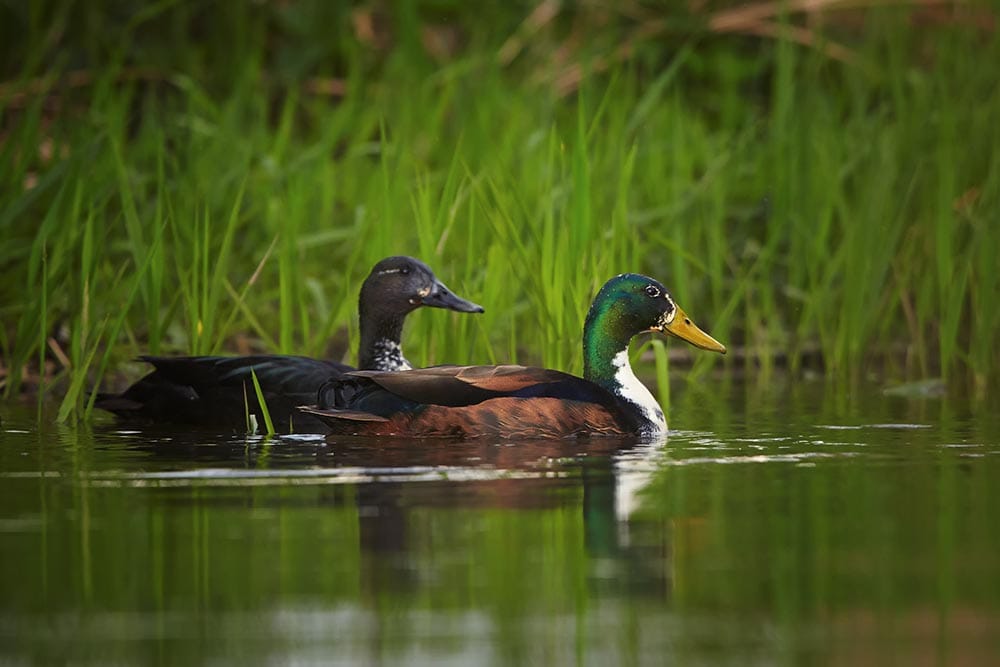Ducks have been popular on farms and homesteads around the world for thousands of years. The Mallard, which is thought to be the direct descendant of all domestic ducks in existence today, was domesticated in China between 2,000 and 3,000 years ago. One domesticated duck that can be traced back to the Mallard is the Pomeranian duck.
Pomeranian ducks originated in Germany, but they are common among homesteaders and farmers around the world today. Are you considering taking care of this duck breed for eggs, meat, or simply as a pet? There is much to learn about these ducks before making a final decision. Here’s what you should know.

Quick Facts About the Pomeranian Duck
| Breed Name: | Anatidae, Waterfowl |
| Place of Origin: | Germany |
| Uses: | Eggs, meat |
| Male Size: | 6.5 pounds |
| Female Size: | 5.5 pounds |
| Color: | Black and white, blue and white |
| Lifespan: | 8–12 years |
| Climate Tolerance: | All climates |
| Care Level: | Moderate |
| Production: | Moderate |
| Temperament: | Skittish, friendly, curious |
Pomeranian Duck Origins
The Pomeranian duck comes from Germany, in a region near the Baltic Sea called Pomerania. These ducks stayed in Germany for hundreds of years before being transported to other parts of the world. Today, they can be found almost everywhere, including in Europe and the United States.

Pomeranian Duck Characteristics
This duck breed is stout and a bit skittish, especially around strange people and animals. They can be friendly with humans and animals that they are used to spending time around. However, they make better farm or homestead production animals rather than family pets. They do well in groups of other ducks, though, and prefer not to live alone.
Uses
The most common uses for the Pomeranian duck are eggs and meat. They are not the most productive duck breed in existence, but one can produce up to 100 eggs a year, so they can keep a small family fed or make significant profits for a farm throughout the year. These are medium to large ducks, known for producing a fair amount of juicy, tender meat. Some people keep these ducks as pets because they tend to be social when they’re comfortable with the people whom they spend time with.

Appearance & Varieties
The Pomeranian duck is a hardy breed that is larger than the average duck breed. These ducks are usually black or blue and sport white breast feathers. Their eyes and feet are usually dark brown, and their beaks are usually black. Males can weigh up to 6.5 pounds, while females tend to weigh in at about 5.5 pounds.
Population, Distribution, Habitat
Pomeranian ducks are relatively rare because they are simply as not as popular and easy to breed as many other types of ducks. Most farmers and homesteaders source their Pomeranian ducks from breeders instead of attempting to breed these ducks themselves.
No database accurately estimates the current population or distribution of the Pomeranian duck. However, Oregon State University indicates that breeders in Germany and Switzerland take on the bulk work of breeding these ducks.

Are Pomeranian Ducks Good for Small-Scale Farming?
Pomeranian ducks are good for both large and small-scale farming. They don’t require much space to graze, and they can use something as small as a plastic children’s swimming pool as a water source. They can lay eggs for small family farms just as well as chickens can, which offers an opportunity to diversify the farm. They can also be used to produce meat, helping to keep food bills low for homesteaders and farmers alike.

Conclusion
Pomeranian ducks might be the perfect fit for your farm or homestead. You should find a reputable breeder to buy your first group of ducks from to ensure that they will be as healthy and happy as possible while under your care. Take the time to vet any breeder you are considering working with, and if possible, visit them in person or request a virtual tour of the facility.
Featured Image Credit: Martin Mecnarowski, Shutterstock
